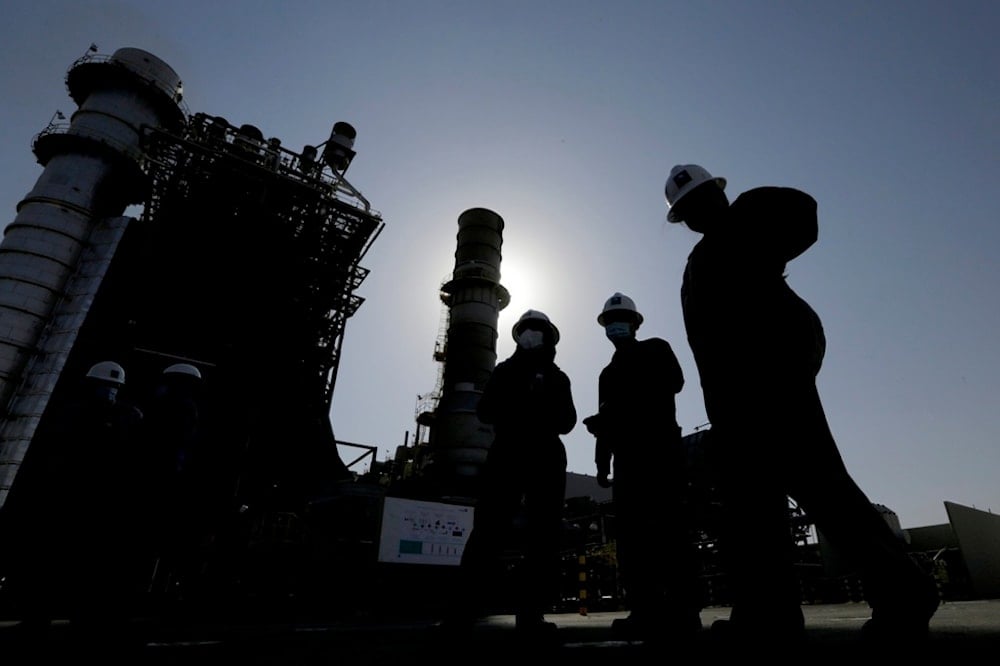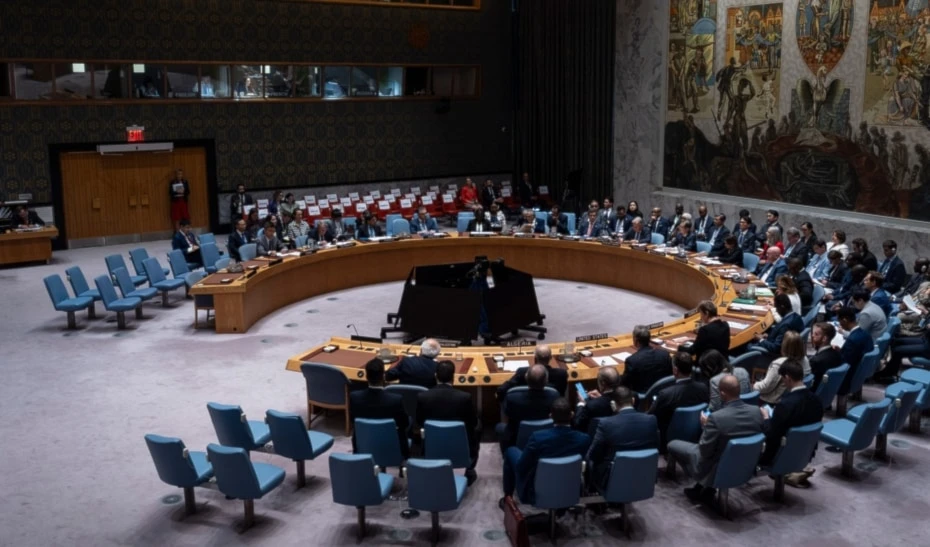Saudi Aramco debt hits $24.6 billion as dividend cut fails to help
Despite cutting dividends, this debt surge highlights financial strain as oil revenues falter and Vision 2030 spending ramps up.
-

Saudi Aramco engineers walk in front of a gas turbine generator at Khurais oil field during a tour for journalists, outside of Riyadh, Saudi Arabia, on June 28, 2021. (AP)
Saudi Aramco’s net debt surged to its highest level in nearly three years in the first quarter of 2025, signaling mounting financial pressure on the oil giant even as it slashed its massive dividend payout, Bloomberg reported on Monday.
In a statement released Monday, Aramco reported an 18% increase in net debt from the end of last year, reaching 92.4 billion riyals ($24.6 billion). The rise came despite the company's decision to reduce its dividend by nearly a third, as free cash flow continued to fall short of covering the payout.
The mounting debt underscores the strain on Saudi Arabia’s fiscal outlook as Crown Prince Mohammed bin Salman pushes ahead with his multi-trillion-dollar economic transformation agenda, known as Vision 2030. With state revenues increasingly reliant on oil dividends, the pressure is intensifying on Aramco to balance generous payouts with financial sustainability.
Stark year-on-year increase
While the company still maintains lower borrowing levels than many of its global peers, reporting a gearing ratio of 5.3% as of March, compared to an industry average of 14%, the rise from 4.5% at the end of last year marks a notable shift.
Aramco's Chief Financial Officer Ziad Al-Murshed previously signaled that more debt issuance is likely, following last year’s $9 billion in bond sales. The financial squeeze comes amid a downturn in oil prices. Brent crude is currently trading around $66 per barrel in London, far below the estimated $90 required for Saudi Arabia to balance its budget, according to the International Monetary Fund. Aramco sold crude at an average of $76.30 per barrel in the first quarter, down from $83 a year ago.
The company reported a 4.6% drop in first-quarter net income on Sunday, with free cash flow declining 16% year-on-year to $19.2 billion. Total dividends for the quarter stood at $21.36 billion, and the firm confirmed that it expects to pay out $85 billion in 2025, a significant reduction from the $124 billion disbursed last year.
The previous year’s payout included a substantial performance-linked component reflecting record 2022 earnings, but that element has now been scaled back. The aggressive distribution policy left Aramco with over $27 billion in net cash at the end of 2023.
Saudi debt to rise?
Adding to fiscal concerns, Saudi Arabia’s government debt levels also spiked in the first quarter, rising at the fastest pace on record. The kingdom is expected to increase its reliance on borrowing to finance Vision 2030 projects, which aim to diversify the economy away from oil through investments in technology, tourism, and infrastructure.
Meanwhile, Riyadh has played an increasingly active role within the OPEC+ alliance. Over the past month, Saudi-led supply hikes exceeded earlier projections in an effort to stabilize global markets. However, these moves have yet to lift oil prices significantly.
The situation may come into sharper focus as US President Donald Trump visits Saudi Arabia this week, with energy policy and economic cooperation expected to dominate the agenda.

 3 Min Read
3 Min Read










